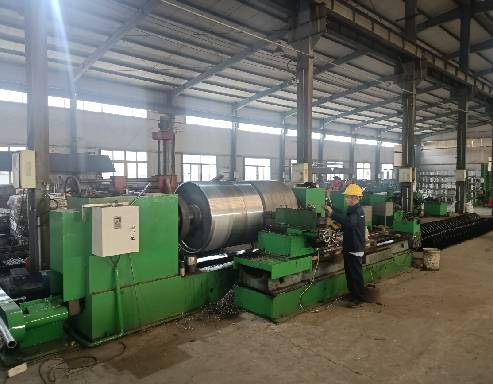 Afrikaans
Afrikaans  Albanian
Albanian  Amharic
Amharic  Arabic
Arabic  Armenian
Armenian  Azerbaijani
Azerbaijani  Basque
Basque  Belarusian
Belarusian  Bengali
Bengali  Bosnian
Bosnian  Bulgarian
Bulgarian  Catalan
Catalan  Cebuano
Cebuano  Corsican
Corsican  Croatian
Croatian  Czech
Czech  Danish
Danish  Dutch
Dutch  English
English  Esperanto
Esperanto  Estonian
Estonian  Finnish
Finnish  French
French  Frisian
Frisian  Galician
Galician  Georgian
Georgian  German
German  Greek
Greek  Gujarati
Gujarati  Haitian Creole
Haitian Creole  hausa
hausa  hawaiian
hawaiian  Hebrew
Hebrew  Hindi
Hindi  Miao
Miao  Hungarian
Hungarian  Icelandic
Icelandic  igbo
igbo  Indonesian
Indonesian  irish
irish  Italian
Italian  Japanese
Japanese  Javanese
Javanese  Kannada
Kannada  kazakh
kazakh  Khmer
Khmer  Rwandese
Rwandese  Korean
Korean  Kurdish
Kurdish  Kyrgyz
Kyrgyz  Lao
Lao  Latin
Latin  Latvian
Latvian  Lithuanian
Lithuanian  Luxembourgish
Luxembourgish  Macedonian
Macedonian  Malgashi
Malgashi  Malay
Malay  Malayalam
Malayalam  Maltese
Maltese  Maori
Maori  Marathi
Marathi  Mongolian
Mongolian  Myanmar
Myanmar  Nepali
Nepali  Norwegian
Norwegian  Norwegian
Norwegian  Occitan
Occitan  Pashto
Pashto  Persian
Persian  Polish
Polish  Portuguese
Portuguese  Punjabi
Punjabi  Romanian
Romanian  Russian
Russian  Samoan
Samoan  Scottish Gaelic
Scottish Gaelic  Serbian
Serbian  Sesotho
Sesotho  Shona
Shona  Sindhi
Sindhi  Sinhala
Sinhala  Slovak
Slovak  Slovenian
Slovenian  Somali
Somali  Spanish
Spanish  Sundanese
Sundanese  Swahili
Swahili  Swedish
Swedish  Tagalog
Tagalog  Tajik
Tajik  Tamil
Tamil  Tatar
Tatar  Telugu
Telugu  Thai
Thai  Turkish
Turkish  Turkmen
Turkmen  Ukrainian
Ukrainian  Urdu
Urdu  Uighur
Uighur  Uzbek
Uzbek  Vietnamese
Vietnamese  Welsh
Welsh  Bantu
Bantu  Yiddish
Yiddish  Yoruba
Yoruba  Zulu
Zulu pulley in conveyor belt
The Role of Pulleys in Conveyor Belt Systems
Conveyor belt systems are integral to modern manufacturing and logistics, facilitating the efficient movement of goods across various industries. At the heart of these systems are pulleys, which play a critical role in the operation and functionality of conveyor belts. This article explores the significance of pulleys in conveyor belt systems, their types, and their impact on efficiency and reliability.
Understanding Pulleys
Pulleys are simple machines consisting of a grooved wheel that turns around an axle. They are used to change the direction of force and can be employed in various configurations to achieve specific mechanical advantages. In conveyor systems, pulleys are primarily used to support the belt and transfer motion along the system, helping transport materials from one point to another.
Types of Pulleys in Conveyor Systems
There are several types of pulleys commonly used in conveyor belt systems
1. Drive Pulleys These are crucial components that provide the primary motion to the conveyor belt. They are driven by a motor, leading to the movement of the belt. The drive pulley is usually located at the head or tail of the conveyor system.
2. Idler Pulleys Unlike drive pulleys, idler pulleys do not provide motion but help maintain the tension in the conveyor belt. They support the weight of the conveyed materials and ensure the belt remains aligned, reducing wear and tear.
pulley in conveyor belt

3. Tail Pulleys Situated at the end of the conveyor, tail pulleys help in redirecting the belt back to the drive pulley. They are critical in allowing the continuous loop of the conveyor system.
4. Wing Pulleys These pulleys have winged designs that reduce material buildup and help in self-cleaning, enhancing efficiency in handling bulk materials.
The Importance of Pulleys in Conveyor Efficiency
Pulleys are essential for the smooth operation of conveyor systems. Their ability to facilitate motion and provide support directly impacts the speed and efficiency of material transport. By ensuring proper alignment and tension of the conveyor belt, pulleys minimize friction and energy consumption, leading to lower operational costs.
Moreover, the choice of pulley type and the materials used in their construction can significantly influence the longevity of the conveyor system. High-quality materials can resist wear and corrosion, extending the life of both the pulleys and the belt itself. This durability is especially crucial in industries handling abrasive materials, where wear rates can be high.
Maintenance and Troubleshooting
Regular maintenance of pulleys is vital to ensure the longevity of conveyor systems. Proper alignment, lubrication, and inspection for wear and tear can prevent unexpected breakdowns and costly downtime. Common issues include belt misalignment, which can lead to excessive wear on both the belt and the pulleys, and insufficient tension, which can cause slippage and decreased efficiency.
In conclusion, pulleys are indispensable components of conveyor belt systems, facilitating efficient material handling in various industries. By understanding their types and functions, organizations can optimize their conveyor systems for better performance and increased reliability, ultimately enhancing operational productivity. Regular maintenance and the strategic selection of pulleys can yield significant benefits, making them a fundamental aspect of modern industrial operations.
-
Revolutionizing Conveyor Reliability with Advanced Rubber Lagging PulleysNewsJul.22,2025
-
Powering Precision and Durability with Expert Manufacturers of Conveyor ComponentsNewsJul.22,2025
-
Optimizing Conveyor Systems with Advanced Conveyor AccessoriesNewsJul.22,2025
-
Maximize Conveyor Efficiency with Quality Conveyor Idler PulleysNewsJul.22,2025
-
Future-Proof Your Conveyor System with High-Performance Polyurethane RollerNewsJul.22,2025
-
Driving Efficiency Forward with Quality Idlers and RollersNewsJul.22,2025





























